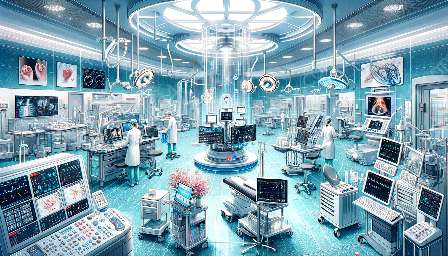The nervous system is a complex and vital component of the human body, responsible for controlling and coordinating all bodily functions. Understanding the anatomy and physiology of the nervous system is crucial in diagnosing and treating various medical conditions. Additionally, the development of advanced medical devices has revolutionized the way healthcare professionals assess and improve nervous system health.
Anatomy and Physiology of the Nervous System
The nervous system can be broadly categorized into two main parts: the central nervous system (CNS) and the peripheral nervous system (PNS). The CNS consists of the brain and spinal cord, while the PNS includes the nerves that extend from the CNS to the rest of the body.
The nervous system is further divided into the somatic and autonomic nervous systems. The somatic system controls voluntary movements and reflexes, while the autonomic system regulates involuntary bodily functions such as heart rate, digestion, and respiratory rate.
The neurons are the building blocks of the nervous system, transmitting electrical and chemical signals throughout the body. Neuroglia, or glial cells, provide support and protection for the neurons, contributing to the overall function and health of the nervous system.
Medical Devices and the Nervous System
Advances in medical technology have led to the development of innovative devices that enable healthcare professionals to diagnose and treat nervous system disorders more effectively. These devices play a crucial role in improving patient outcomes and enhancing the quality of care in neurology and neurosurgery.
Neuroimaging Technologies
Neuroimaging techniques such as magnetic resonance imaging (MRI), computed tomography (CT), and positron emission tomography (PET) provide detailed images of the brain and spinal cord. These imaging modalities aid in the diagnosis of conditions such as brain tumors, strokes, and traumatic brain injuries.
Electroencephalography (EEG)
EEG is a non-invasive technique that records the electrical activity of the brain. It is used to diagnose epilepsy, sleep disorders, and monitor brain function during surgeries. EEG devices have become more compact and portable, allowing for convenient monitoring in various clinical settings.
Deep Brain Stimulation (DBS) Devices
DBS devices are used to treat movement disorders such as Parkinson's disease and essential tremor. These implantable devices deliver electrical stimulation to specific brain regions, effectively managing symptoms and improving patients' quality of life.
Conclusion
Understanding the intricate workings of the nervous system is essential for healthcare professionals involved in diagnosing and treating neurological disorders. The integration of anatomy, physiology, and medical devices enhances the overall management of nervous system-related conditions, leading to improved patient care and outcomes.


